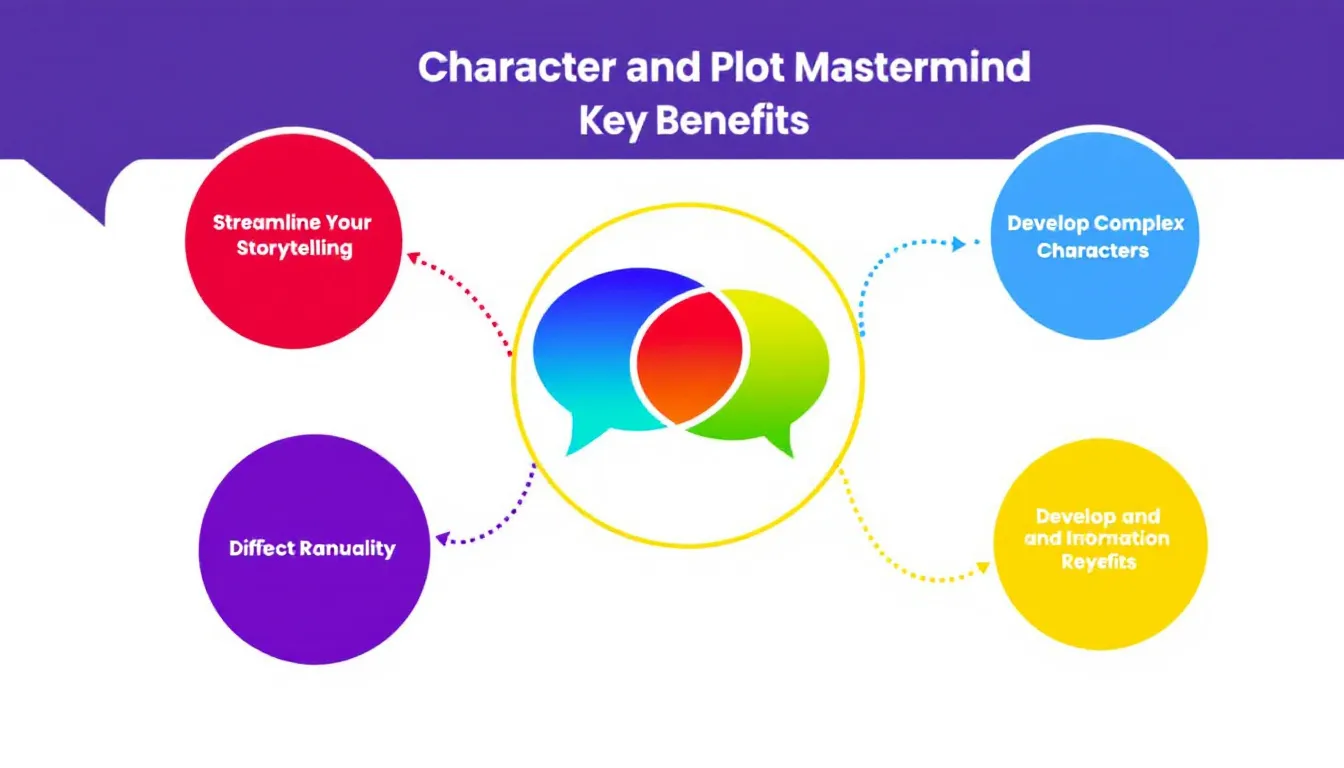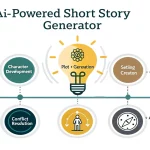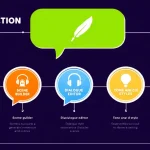Character Dialogue Generator
Is this tool helpful?
How to Use the Character Dialogue Generator Tool Effectively
This Character Dialogue Generator helps you create authentic conversations between two characters that fit your story’s plot and relationships. To get the best results, fill in each field with clear and detailed information. Here’s how to use it:
-
Character A Description: Enter the name and a brief description of your first character. Be specific.
Examples:
- Eva, a sharp-witted detective haunted by her past
- Marcus, an eager young botanist with a passion for rare plants
-
Character B Description: Provide the name and a short summary of the second character. Highlight key traits or motivations.
Examples:
- Liam, a charming con artist hiding a secret soft side
- Dr. Selene, a meticulous scientist skeptical of human emotion
-
Relationship Dynamics: Describe how these two characters relate to each other. Include emotions, history, or conflicts that shape their dialogue.
Examples:
- Childhood friends with growing romantic tension, struggling to communicate
- Strangers forced into an uneasy alliance during a crisis
-
Plot Context: Explain the situation where the dialogue happens. Set the scene with relevant events or circumstances.
Examples:
- Survivors meeting for the first time after a disaster leaves them stranded
- Negotiating in a diplomatic summit critical for peace talks
-
Key Plot Points (Optional): Add any important story elements that should appear or be hinted at in the dialogue.
Examples:
- The discovery of a hidden map leading to a lost city
- The revelation that one character secretly works for the opposing faction
-
Conflict or Tension (Optional): Highlight specific conflicts or tensions you want the dialogue to explore or resolve.
Examples:
- Disagreements over moral choices regarding the fate of a captured enemy
- Mistrust stemming from past betrayals affecting cooperation
- Generate Dialogue: Click the button to create a tailored dialogue that reflects your inputs.
- Review and Copy: Read the generated dialogue carefully. Use the copy function to transfer it into your manuscript or script for further editing.
Providing precise and thoughtful details for each input helps the tool produce engaging, natural-sounding conversations that serve your story well.
Introduction: What Is the Character Dialogue Generator and Why Use It?
The Character Dialogue Generator is an AI-driven writing assistant designed to help you craft realistic, compelling conversations between characters that advance your story’s plot.
This tool combines character description, relationship dynamics, and plot context to deliver dialogue that feels authentic, purposeful, and rich with subtext. By integrating key plot points and conflict, it ensures the dialogue pushes your narrative forward without feeling forced or artificial.
Purpose of the Tool
- Generate character-specific dialogue that maintains unique voices and speech patterns
- Embed important story details seamlessly to enhance plot development
- Explore conflicts and tensions naturally within dialogue to build emotional depth
- Provide fresh inspiration for challenging dialogue scenes and overcome writer’s block
- Offer a fast, efficient starting point for dialogue creation that you can personalize
Key Benefits for Writers
- Save Time: Quickly generate meaningful dialogue drafts instead of struggling with blank pages.
- Ensure Consistency: Keep each character’s dialogue true to their personality and background.
- Advance Your Plot: Use dialogue as a tool to reveal key insights, hint at mysteries, or foreshadow events.
- Enhance Conflict: Bring tension and unresolved issues to the forefront organically in conversation.
- Boost Creativity: Discover unexpected directions for character interactions and story development.
Practical Uses of the Character Dialogue Generator
This tool fits seamlessly into your writing workflow, whether you’re drafting a novel, screenplay, or interactive story. Here are practical ways to use it:
Overcoming Dialogue Writer’s Block
When stalled on how your characters should speak or interact, enter their descriptions and context to get a ready-made conversation. It breaks the ice and gives you material to build upon.
Maintaining Unique Character Voices
Use the tool to preserve distinct speech patterns and attitudes for different characters, helping you avoid generic or blended dialogue that loses individuality.
Weaving Plot Points Naturally
Incorporate important story elements or secrets into dialogues without overt exposition, making conversations feel organic and plot-relevant.
Exploring Conflict and Tension
Highlight power struggles, secrets, or emotional barriers in character interactions to deepen drama and suspense, directly through their spoken exchanges.
Creative Brainstorming and Revision
Generate multiple dialogue options by changing inputs and compare them for best fit. Use the drafts to inspire fresh ideas or enhance scenes in rewriting.
The Character Dialogue Generator helps you focus on storytelling by handling the challenging task of dialogue creation, ensuring your scenes remain true to your characters and story goals.
Important Disclaimer
The calculations, results, and content provided by our tools are not guaranteed to be accurate, complete, or reliable. Users are responsible for verifying and interpreting the results. Our content and tools may contain errors, biases, or inconsistencies. Do not enter personal data, sensitive information, or personally identifiable information in our web forms or tools. Such data entry violates our terms of service and may result in unauthorized disclosure to third parties. We reserve the right to save inputs and outputs from our tools for the purposes of error debugging, bias identification, and performance improvement. External companies providing AI models used in our tools may also save and process data in accordance with their own policies. By using our tools, you consent to this data collection and processing. We reserve the right to limit the usage of our tools based on current usability factors.







